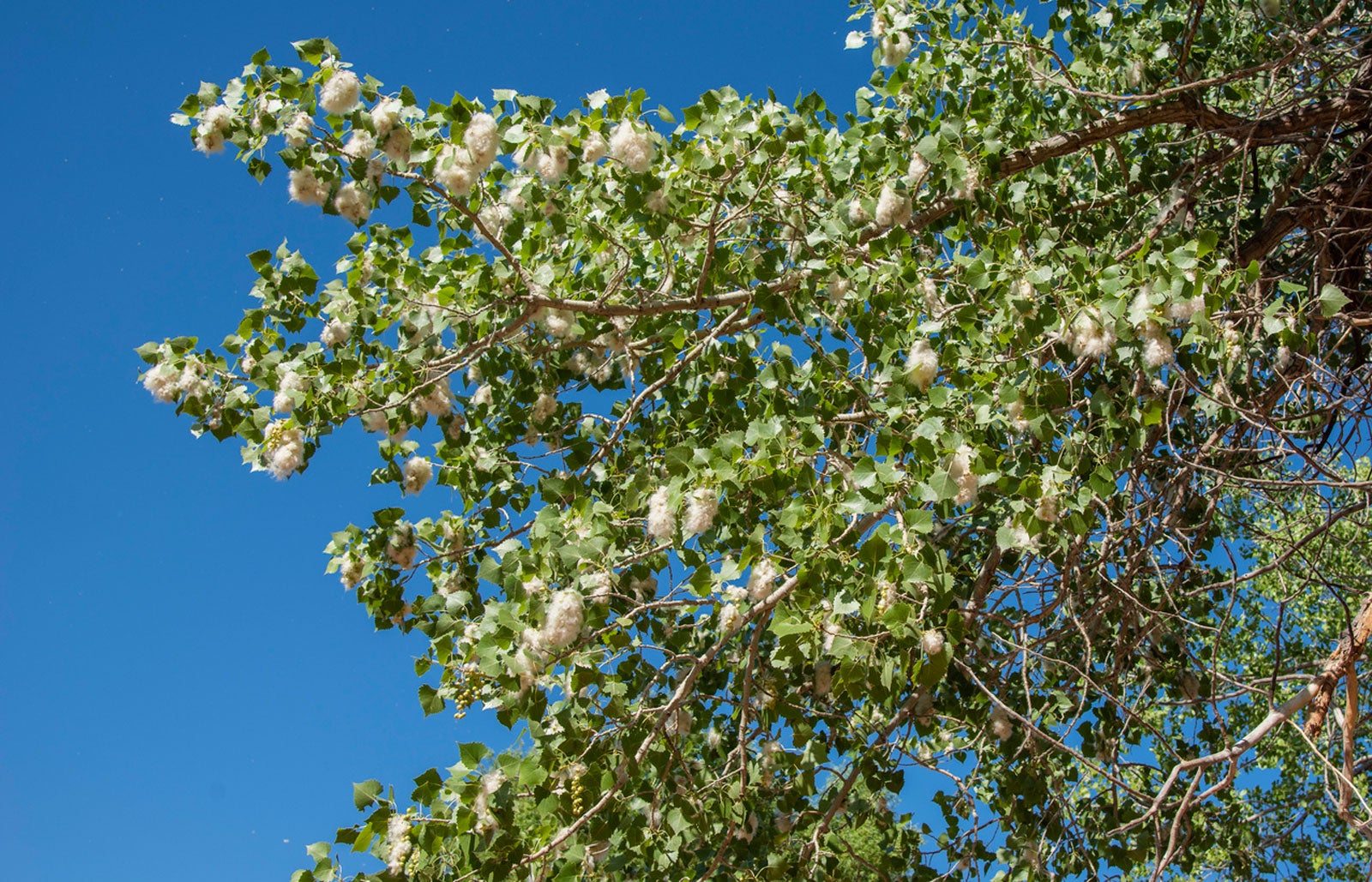cottonwood tree leaf disease
Others include Septoria leaf spot caused by Septoria musiva Marssonina brunnea leaf spot and Alternaria leaf and stem blight caused by Alternaria tenuis 16. Also active now mainly on Colorados cottonwoods the.
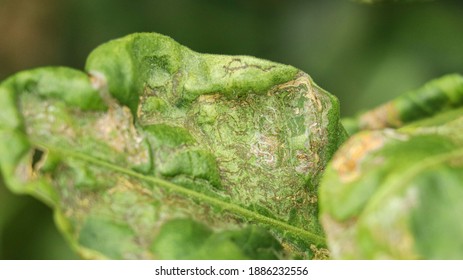
Diseased Cottonwood Tree Images Stock Photos Vectors Shutterstock
Canker in cottonwoods can be easily identified by its sunken discolored areas of bark.

. These pests can defoliate the cottonwood tree completely killing it but generally. Occasionally a severe disease outbreak can cause premature leaf drop and dieback of parts of the tree. Signs of an infestation include shoots that turn black shrivel and then die.
A common Cottonwood and Poplar tree disease is Cytospora Canker. Trees - Freeze damage sunburn drought low fertility physical injuries etc. There are a number of borers which are attack cottonwood and elm.
Leaf spot diseases may become epidemic during a wet spring and summer. Cottonwood and Poplar Populus spp. Fungal disease caused by.
Worse in years with wet springs. The problem shows as cankered areas on stems and branches which eventually. Cytospora canker is a tree disease caused by several species of Valsa and Leucostoma fungi.
Female and juvenile scales do not have wings legs. Insects and disease organisms are a continuing threat to cottonwood Populus deltoides Bartr especially during the trees first 5 years. If a tree.
Dark sunken cracked cankers form on twigs trunks and branches. There are only a few species of poplar trees that are classified as cottonwoods. Leaf blight Linospora tetraspora Leaf spot Mycosphaerella populicola Marssonina leaf spot.
Anthracnose Control high risk of spreading the fungal pathogen Identification On sycamore ash maple oak and walnut. Leaves drop. The cottonwood tree is a hardwood tree that loses its leaves in the fall.
The danger is intensified in large plantings of a single species and age because rapid buildup of damaging agents can occur. This tree leaves disease is usually caused by the Rhytisma fungi colonizing the maple family maple proper and sycamore. Cytospora canker is the biggest invasive threat to cottonwood trees partially because the wood is already weaker than other types of trees.
The symptoms start as yellow-green or light green spots in late spring-early summer with added tar-like formations by the late summer. Yellow laminated butt rot of poplars. Cottonwood is indeed susceptible to powdery mildew.
Leaf spot diseases should be taken seriously if they result in moderate to complete leaf. The 3 main species are Populus deltoids eastern cottonwood Populus fremontii Fremonts cottonwood and the Populus nigra black poplar. Some of the common diseases affecting these trees are.
The disease causes dieback as the canker kills the bark and creates an oozing resin from the trunk. The fungus attacks and kills the bark causing dead or dying areas called cankers. Cottonwood trees Populus spp are large quick-growing trees valued for their vibrant autumn foliage.
Scale insects are not always recognizable as insects. Dothichiza or Branch Canker. Tremuloides White Poplar P.
Cottonwood and other poplars willows fruit trees elm conifers spruce pecan. Related Species Balsam Poplar P. The beetle can completely defoliate a cottonwood tree.
Cottonwood Tree Diseases Insect Infestations Slime Flux. Common cottonwood species in. Most leaf spot diseases affect only a small percentage of the trees overall leaf area and are a minor stress on the.
Plant Disease Clinic many other broadleaf trees. The fungus attacks weakened trees affected by drought late-spring frosts insect and fungi defoliation or trunk and root injury. The larvae burrow into the phloem which can severely damage young or stressed trees.
Alba Pests Common diseases include Melampsora leaf rust Septoria leaf spot and canker Cytospora canker wetwood and stem decay. Aspen cottonwood leaf diseases not lethal to trees but could impact fall colors. Cankers first appear as slightly sunken areas on the smooth bark of branches and trunks.
Here is a link to the Texas Plant Disease Handbo0k information about cottonwood diseases. Marssonina leaf spot is caused by the Marssonina fungus and is the most common leaf disease of aspen and cottonwoods in Colorado. However Cytospora spp.
Silver Popular and Cotton Tree Care Issue Two Silver Poplar Tree Diseases. Quick facts Leaf spot diseases weaken trees and shrubs by interrupting photosynthesis. The cottonwood leaf beetle is 14-inch long.
Huge host range. Conifer - Cottonwood rust. As with many diseases the best route of action is.
Opportunistic fungus attacks weak stressed. Deltoides Quaking Aspen P. It is caused by a bacterial infection that enters through wounds in the.
Melampsora leaf rust caused by Melampsora medusae is one of the most serious leaf diseases of plains cottonwood. Some stands of aspen and cottonwood trees across northern Colorado and along the Front Range wont be their most picturesque this fall due to leaf spot diseases that benefitted. Leaf spot fungal diseases can make cottonwood and poplar trees look unsightly.
One key to diagnosis is that you will find the fungal growth on both the upper and lower surfaces of the affected leaves. Leaf spots and blotches appear in the spring later for walnut often following leaf veins. Lump Growth on a Cottonwood Tree.
These fungal problems are hard to distinguish from each other and affect unhealthy trees by using unsterilized pruning tools or wounding portions of the bark makes trees more susceptible to the disease. Although the unsightly leaves and excessive leaf fall can be spectacular they usually cause only minimal growth loss. Slime flux is also called wetwood.
The fungus spreads across the living bark and wood of the tree. Leaf beetles are small less than 13 inch and chew on leaves causing the leaves to fade discolor and fall. Are fairly host specific.
Hardy fairly disease resistant. Its a fungus-based disease that affects stressed trees which would include cottonwoods that experienced a late frost. The disease can be identified by the presence of dark brown spots or flecks on leaves which can then fuse into large black splotches on severely infected leaves.
Several fungi cause leaf diseases on cottonwood throughout its geographic range. Callus tissue may form. Cytospora and septoria canker fungus.
![]()
Leaf Spot Diseases Of Trees And Shrubs Umn Extension

Poplar Populus Spp Septoria Leaf Spot And Canker Pacific Northwest Pest Management Handbooks

Leaf Spot Diseases Of Trees And Shrubs Umn Extension
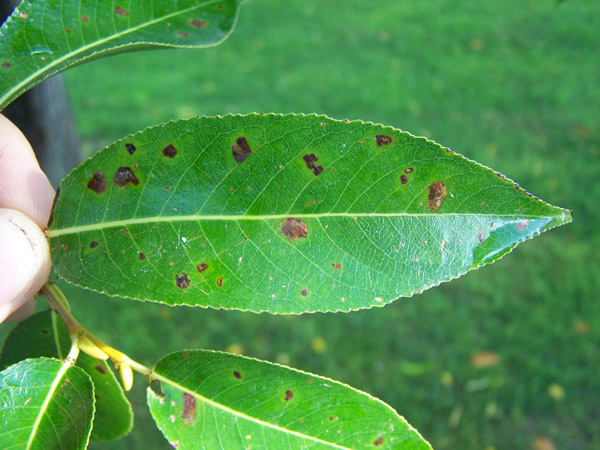
Leaf Spot Diseases Of Trees And Shrubs Umn Extension

Diseases And Insect Infections To Watch For In Your Cottonwood And Elm Trees Tree Care Blog Boise Idaho Mountain West Arbor Care

Leaf Spot Diseases Of Trees And Shrubs Umn Extension
Diseases Of The Fremont Cottonwood Tree

Disease And Pest Issues Yellowstone Valley Tree Surgeons
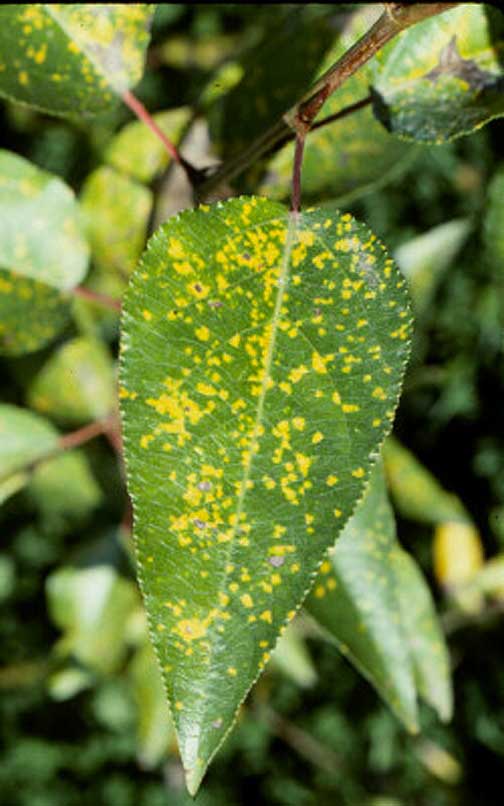
Poplar Populus Spp Leaf Rust Pacific Northwest Pest Management Handbooks

Black Leaf Spot Field Guide To Insects And Diseases Of Az And Nm Forests

Colorado Master Gardener Fading Aspen Trees Steamboattoday Com
Signs And Symptoms Of Cytospora Canker Dieback In Cottonwood And Download Scientific Diagram

Poplar Populus Spp Septoria Leaf Spot And Canker Pacific Northwest Pest Management Handbooks

Aspen And Poplar Leaf Spots 2 920 Extension
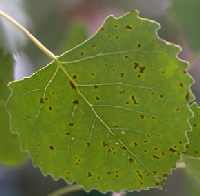
Aspen And Poplar Leaf Spots 2 920 Extension
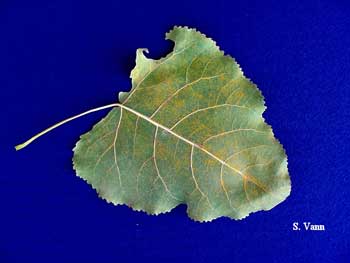
Common Tree Disease Problems Symptoms And Photos Of Tree Disease
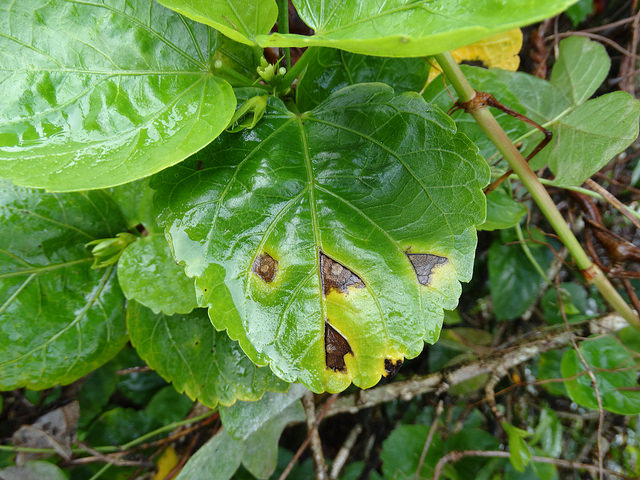
Summer Tree Care Identifying Common Tree Diseases In Summer Part 3 Iron Tree Tree Knowledge Base

